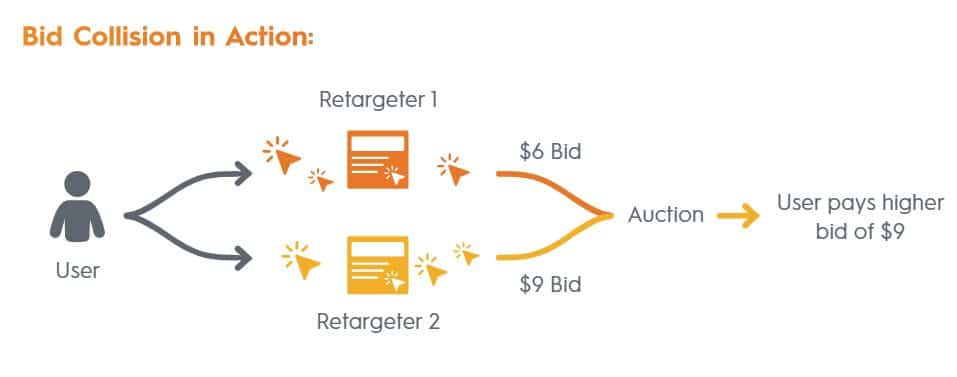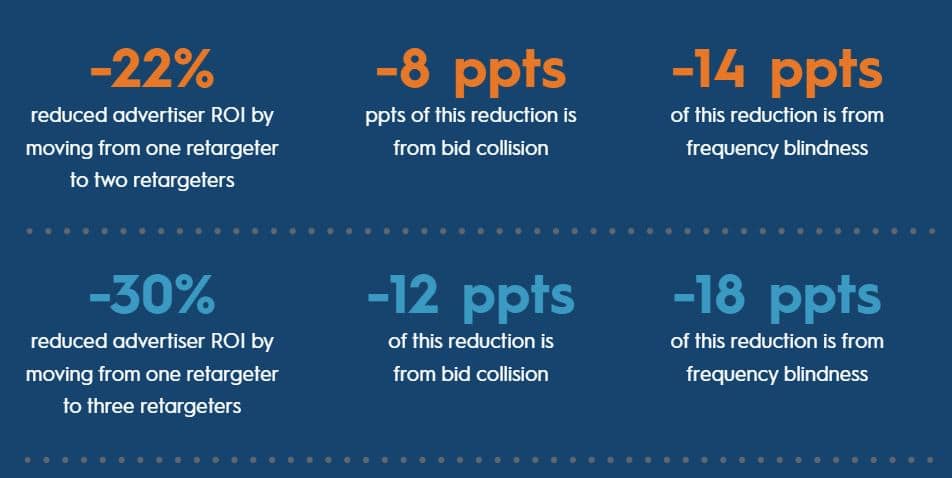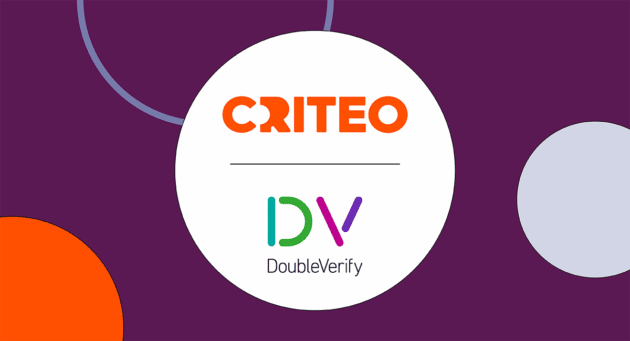“Our strategy is to not mix retargeters in the same market. Otherwise, you’re cannibalizing and bidding against yourself. You’ll end up paying twice for the same inventory.” – Wojciech Soltys, Head of Performance Marketing, Remix
When you’re in the market for retargeting technology or you’re just getting started, a lot of the initial testing all has to do with one question. And it boils down to this: one retargeter vs. two retargeters.
We know that retargeting is popular, whether you’re using one retargeter or two. When Criteo conducted our “State of Ad Tech” research, we found that retargeting and display ads were often the number one marketing tactic. That’s probably no surprise – most performance marketers know the effectiveness of display advertising. Hyper-relevant ads that target web visitors who have expressed interest can generate extremely high ROI while offering trackability and control.
This is usually done through a retargeting partner. And, since marketers usually start by using one retargeting partner, there’s often one key question: should I be using only one retargeting vendor or should I be using multiple retargeting solutions?
The Publishing Picture in 2019
Retargeting vendors bring different approaches and different abilities to the table. Back in the early 2010s, it was entirely possible that a specific retargeting vendor would bring unique or exclusive access to publisher inventory – and thus users.
However, after the RTB (real-time bidding) revolution, only a small number of vendors have truly unique inventory and unique users. Most vendors use the RTB Exchanges for most, if not all, of their ad inventory. Those exchanges are open to many bidders and therefore don’t represent exclusive or incremental inventory or users.
But it is possible for a retargeting vendor to have preferential inventory outside of RTB exchanges –Criteo Direct Bidder is a nice example of that advantage.
The Science of RTB Exchanges
The open RTB Exchange is a great thing: it allows any advertiser to bid competitively on showing an ad to a given, specified user. Dynamic retargeting takes advantage of this ability to precisely determine the value of showing your ad to a given user and bidding accordingly. When your retargeting vendor wins RTB auctions – and shows your ads – you earn more sales at your targeted ROI.
When you use just one retargeting solution, all of your bids are coordinated and aligned to drive maximum ROI. Your retargeting vendor understands how the value of each subsequent ad display decreases, provides just the right frequency for each user, and makes sure the user experience is optimal.
The Multiple Retargeter World
Things start to become a bit complicated when two retargeters are assigned access to the same user. There are two primary problems that occur when marketers decide to use two retargeters.
1. Bid Collision
Because most retargeting ads are sold via an RTB exchange, both retargeters are going to bid (on your behalf) for that user. We call this bid collision. It’s as bad as it sounds: by using your budget to bid against yourself, you are simply going to pay more for the same ad impression.
Since both retargeters are using the same exchange, your bids end up going against one another and you have to pay the maximum price of all the bids submitted your behalf.

2. Frequency Blindness
Using multiple retargeters also results in frequency blindness. It is critical that each user be shown just the right number of ads and that each ad is accurately valued. However, because retargeter 1 doesn’t know how many ads were shown by retargeter 2 (and vice versa), it’s impossible for either retargeter to correctly frequency cap for the user. Even worse, users are likely to be over-exposed and have a bad experience with your brand. Finally, the bids submitted by either retargeter don’t reflect the true value of the ad impression because the retargeter bidding doesn’t have full visibility into the number of ads already shown.
What the Data Says
So, we know that bidding against yourself can only destroy value. After all, do you set up two accounts to bid on eBay or other online auctions? However, how do we calculate the actual degradation in ROI that comes from bid collision and frequency blindness?
To answer this question, Criteo convened a cross-functional team of experts in RTB auctions, data science, and marketing effectiveness. We created a simulation model that allows us to investigate the change in value created for an advertiser when moving from one to two – or even three — retargeters.
Our model also allowed us to determine the specific effect of both bid collision and frequency blindness.
Our team conducted a simulation of over 150 million advertising displays. We built different scenarios: one scenario with one retargeter, a scenario with two retargeters, and a scenario for three retargeters.
From there, we determined how much value each option would deliver for an advertiser. We adjusted various parameters, like the split of displays between retargeter 1 and retargeter 2, in order to understand how changes to the system affect reduction in ROI.
The Real Cost of Using Multiple Retargeters

Overall, the research didn’t leave any doubts: there is a loss of -22% ROI when advertisers use two retargeters instead of one and it gets even worse if you throw more retargeters into the mix.
The Methodology
Our study consisted of two main models: one model to specifically determine the negative effect of frequency blindness and a second model that we use to take the effect of frequency blindness and apply bid collision. In this second model, we determine the loss of value, in terms of ROI, to the advertiser.
Part I: Frequency Blindness
So how do we calculate the exact effect of frequency blindness?
We started by considering three main factors which determine how much degradation in ROI that one might have due to using two retargeters:
- What fraction of all ads are served from each retargeter?
- How fast does the value of an ad impression decline, when an ad for the same product is served to the same user?
- What is the average frequency for ads for a given user?
We also started with a basic marketing fact: all marketing wears out. In specific, we know that the N+1th exposure to a marketing vehicle is generally less powerful than the Nth exposure to the same marketing vehicle. In the case of dynamic retargeting, Criteo has substantial evidence to consider wearout rates between 10% and 20% for each additional exposure.
For frequency, we considered an average frequency of 10. While actual frequency is varied by user, we find that these averages are reasonable over a mid-term period of 7-10 days and represent the period of peak shopping intent for many products.
Finally, we considered the “worst case,” when each retargeter dispenses 50% of the ads, along with a more modest case where the primary retargeter dispenses 80% of the ads.
For each of these cases, we modeled display-by-display what we would expect to happen.
- For each user, we considered the user to have an 80% chance of seeing another ad. Such a rule allows us to have a distribution of frequency that’s close to what we see “in the wild,” while keeping an average frequency of 10 displays.
- When a user sees another ad, we randomly chose (with either 50% or 80% probability) whether the ad was shown by the primary retargeter or the secondary retargeter.
- Each retargeter values the ad based only on the ads that had been shown by that retargeter. For example, if it’s the 3rd ad for user #1 and the ad is shown by retargeter #2, the value of the ad (as seen by retargeter #2) would be the value of showing the first ad (if retargeter #1 had shown ads 1 and 2).
- We calculate the over-valuation created by frequency blindness, as the sum of all valuations compared to the sum of true valuation. Thus, our results are valuation-weighted, reflecting the real-world money spent to purchase inventory.
Please see the following table for an example of how to simulate frequency blindness:
| User | Ad Display # | Retargeter Displaying Ad | Ad Display # (as perceived by retargeter) | True Value of Ad | Value of Ad (as perceived by retargeter) |
| 1 | 1 | 1 | 1 | $1.00 | $1.00 |
| 1 | 2 | 1 | 2 | $0.80 | $0.80 |
| 1 | 3 | 2 | 1 | $0.64 | $1.00 |
| 1 | 4 | 1 | 3 | $0.51 | $0.64 |
| 1 | 5 | 2 | 2 | $0.41 | $0.80 |
| 1 | 6 | 1 | 4 | $0.33 | $0.64 |
| 2 | 1 | 1 | 1 | $2.00 | $2.00 |
| 2 | 2 | 2 | 1 | $1.60 | $2.00 |
| … | … | … | … | … | … |
Notes on the above:
- For displays 1 and 2, we have no interference yet. Retargeter 1 serves both ads and correctly understands the ads are displays #1 and #2 of the user. Thus the true value of the ad and the perceived value of the ad (by the displaying retargeter) are equal.
- The problem arises on display #3. Because Retargeter 2 is showing this ad – and thinks this is display #1, Retargeter 2 values the display at $1.00 when the true value of the ad is $0.64. Note that the true value of the ad declines by 20% with each additional ad display to reflect marketing wear-out.
- With display #4, we are back to Retargeter 1. However, because display #3 was served by Retargeter 2, this action by Retargeter 2 now reduces Retargeter 1’s ability to correctly value the display.
- This process continues until such time as no more ads are served to User 1. We then restart with User 2.
Based on the above study, we find the average overbid is 19% when using two retargeters.
Part II: Bid Collision Plus Frequency Blindness
To determine the effect of bid collision and frequency blindness on advertiser ROI, we simulate millions of bid requests. A bid request occurs when a real-time-bidding (RTB) exchange reaches out to multiple bidders to ask how much each bidder would pay to show an ad to a specific user. Most RTB exchanges use what’s called a first-price auction, where the high bidder is awarded the opportunity to show an ad to the user and where the high bidder pays the bid price. Our study uses a first-price auction model.
For each bid request, there exists value that is created for an advertiser by showing an ad for that advertiser to that user. However, this value must be predicted and it is thus not known with 100% accuracy. In the field of performance retargeting, the best players have high accuracy, requiring that those players be able to predict the probability of future events. Best-in-class retargeting specifically predicts the exact probability that a given user will click on an ad and then make a purchase on an advertiser’s website. Users who are more likely to respond to advertising are worth more, and high-quality retargeting solutions increase or decrease the “bid” in order to reflect those differences.
We term the true value of the display to be the eCPM of the display.
We model each retargeter’s valuation as follows:
- Start with the true value of the display (eCPM)
- Adjust the eCPM up or down by a normally-distributed, random amount to account for the fact that all retargeters have some error (as the future is not perfectly predictable)
- Adjust the eCPM up to account for “overbid error,” as determined in the Frequency Blindness section of this report. This error is exponentially distributed (since it must be 0% or greater) with mean of 19%, based on the results of our study of Frequency Blindness.
Once valuations are calculated for each retargeter, bids must be “shaded” (or reduced) in order to account for the fact that advertiser value can only be created when the amount paid to show a display is less than the true value of showing the display. We take the conservative approach and assume that all retargeters apply optimal bid shading strategies (though such is not likely to be the case due to the scale of data required to create optimal bid shading calculations).
Finally, by using each retargeter’s actual bids we can simulate the auction itself.
- All retargeters’ bids are fed into the auction
- The highest bidding retargeter goes up against all the other “background” bidders in the auction
- We reflect the reality of the marketplace by using actual “win rates” based on the bid
- For example, if the highest retargeter’s bid is $2.15, we might know that a bid of $2.15 wins the auction 22% of the time
- Win rates are “log normal,” meaning that win rates increase slowly at first, then faster, than slowly again. Some call this an “S” curve.
- Increasing a low bid, such as $0.10 up to $0.30 won’t have a big effect as both have small win rates. However, moving a bid from $1.30 to $1.50, will have a larger effect as win rates escalate more quickly in the middle of the distribution.
- On the high end, we see the same effect as on the low end. Increasing a bid from $10 to $10.20 won’t have a big effect because the win rate is already quite high.
- If a retargeter wins the auction, than that retargeter is charged the amount bid and we calculate the value that’s created for the advertiser.
We can then repeat these bid requests millions of times to simulate what happens when an actual advertising client engages with retargeting partners. We created code to look at what would happen when using 1 Retargeter, 2 Retargeters, and 3 Retargeters. Results are presented above.
If you are using one retargeter, keep doing it and make sure you’re using the best-in-class solution. If you’re using more than that, take a hard and analyze how to test down to one retargeter, which should generate higher ROI at the same total spend.
To do that, you can conduct a pre-post analysis of what happens when running one retargeter vs. what happens when running with two retargeters. Split your cookie pool into A and B populations and apply one retargeter to the A group and two retargeters to the B group, keeping total spend the same across A and B populations. From there, measure all sales (not attributed sales) in each population.
If you’re like us – and the clients we’ve worked with – you’ll find out that one retargeter is always better than two!
Want to learn more about retargeting? Visit our Retargeting Hub or download the full “One vs. Two Retargeters Quick Guide.”

























